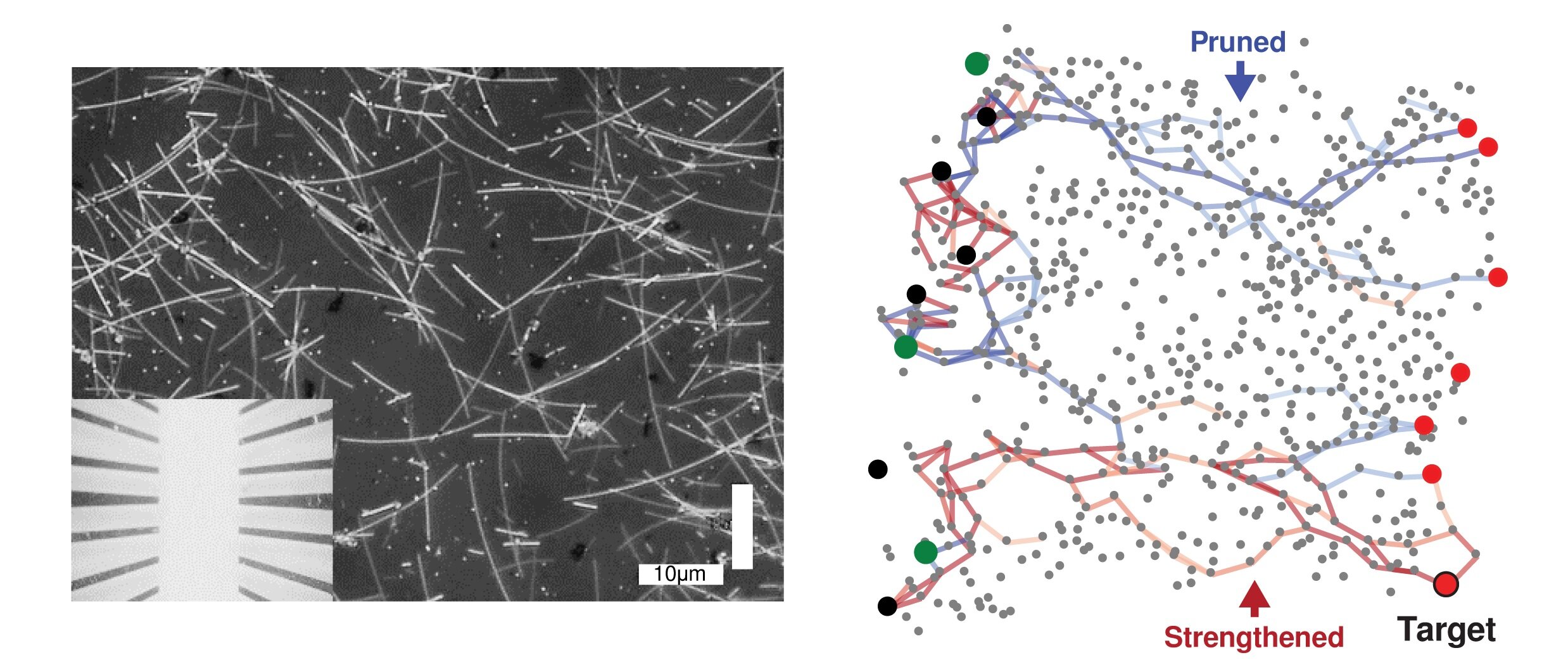
An international team led by scientists at the University of Sydney has shown that networks of nanowires can project both short and long-term memory like the human brain.
The research was published today in the journal Science advancesLed by Dr. Alon Loeffler, Ph.D. in the Faculty of Physics, with collaborators in Japan.
“We found in this research that higher-order cognitive function, which we normally associate with the human brain, can be simulated in non-biological devices,” said Dr. Loeffler.
“This work builds on our previous research in which we showed how nanotechnology can be used to build a brain-inspired electrical device with neural network-like circuits and synapse-like signals.
“Our current work paves the way toward replication of brain-like learning and memory in non-biological hardware systems and suggests that the underlying nature of brain-like intelligence may be physical.”
Nanowire networks are a type of nanotechnology usually made of very fine silver wires that are invisible to the naked eye, covered with a plastic material, and spread across each other like a net. The wires mimic aspects of the interconnected physical structure of the human brain.
Advances in nanowire networks could hold promise for many real-world applications, such as improving robots or sensors that need to make quick decisions in unpredictable environments.
“This nanowire network is similar to an artificial neural network because the nanowires act like neurons, and the places where they connect to each other are similar to synapses,” said Professor Zdenka Koncic, senior researcher in the School of Physics.
“Instead of carrying out some kind of machine learning task, in this study Dr. Loeffler took it one step further and tried to prove that nanowire networks display some type of cognitive function.”
To test the capabilities of the nanowire network, the researchers gave it a test similar to a common memory task used in human psychology experiments, called the N-Back task.
For one person, an N-Back task might involve remembering a specific picture of a cat from a series of cat pictures shown in a sequence. An N-Back score of 7, which is the average for people, indicates that a person can recognize the same image shown seven steps back.
When applied to the nanowire network, the researchers found that it could “remember” the desired endpoint in an electrical circuit seven steps back, which would mean a score of 7 on the N-Back test.
“What we’ve done here is manipulated the voltage of the end electrodes to force the trajectories to change, rather than letting the network do its own thing. We forced the trajectories to go where we want them to go,” said Dr. Loeffler.
“When we did that, its memory was much higher than the resolution and didn’t really degrade over time, which suggests we found a way to harden the paths to push them towards where we want them, and then the network remembers them.
“Neuroscientists believe that this is how the brain works, some synaptic connections are strengthened while others are weakened, and it is believed that this is how we preferentially remember certain things, how we learn and so on.”
When the nanowire network is constantly reinforced, the researchers said, it reaches a point where that reinforcement is no longer needed because the information is being consolidated into memory.
“It’s kind of the difference between long-term memory and short-term memory in our brains,” said Professor Koncic.
“If we want to remember something for a long period of time, we really need to keep training our brains to consolidate that, otherwise it just kind of fades away over time.
“One task showed that a nanowire network can store up to seven items in memory at levels far above chance levels without reinforcement training and with near-perfect accuracy with reinforcement training.”
more information:
Elon Loeffler et al., Neural Learning, Working Memory, and Metaplasticity in Nanowire Networks, Science advances (2023). DOI: 10.1126/sciadv.adg3289. www.science.org/doi/10.1126/sciadv.adg3289

“Web maven. Infuriatingly humble beer geek. Bacon fanatic. Typical creator. Music expert.”





More Stories
Scientists confirm that monkeys do not have time to write Shakespeare: ScienceAlert
SpaceX launches 23 Starlink satellites from Florida (video and photos)
A new 3D map reveals strange, glowing filaments surrounding the supernova